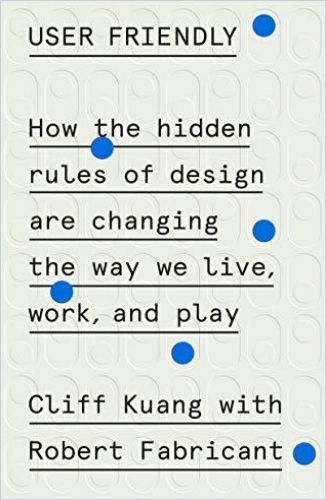Brilliant design can transform sheer function into seamless user experiences. Whether they’re dealing with toasters or smart homes enhanced by artificial intelligence – the ways that people interact with technology influences society in ways both overt and subtle, both positive and negative.

Heartbreaking Designs of Staggering Genius
In Dr. No, the very first James Bond film, agent 007 infiltrates the underground lair of the titular villain. There he finds a giant radio beam pointing at the sky that could, in a somewhat opaque fashion (hey, it’s a movie) start World War III. A nuclear pool reactor powers the beam, and Bond must disable it to save the planet. Disguised as an employee in modish personal protective equipment, Bond sneaks into the reactor, finds a machine labeled “Danger Level” and simply cranks up the dial. It’s no spoiler to say that, at the end of the film, Bond lives to die another day.
The “Danger Level” device seems like pure silliness. But imagine that Bond was instead confronted with a complicated system containing hundreds or thousands of mystifyingly labeled controls, each having multiple functions; a color-coded alert system, in which a single shade of red could have dozens of meanings; and a layout so complex that Bond could hardly locate the needed dial. We might have 27-installment franchise about a mad scientist, not a dashing secret agent.
Good User Design Is Essential
Sadly, the latter scenario is closer to reality, which becomes clear as authors Cliff Kuang and Robert Fabricant describe how poor design can lead to poor outcomes.
Take the 1979 Three Mile Island Nuclear accident. The plant automatically began shutting itself down as per protocol after a mechanical failure. Unfortunately, the control room was so ambiguously designed that the plant operators misunderstood what the system was trying to tell them. Instead of letting the process run its course, they disabled the emergency cooling system. This led to a partial nuclear reactor meltdown, billions of dollars in damage and harm to nuclear power’s reputation that has thus far proved irreparable. A similar tragic error allowed the 2019 Notre Dame fire to burn unabated for 30 minutes, devastating centuries’ worth of irreplaceable human cultural value.
When you look hard enough at monumental machine disasters, you can usually find a design problem.Cliff Kuang and Robert Fabricant
User Friendly is quickly becoming a foundational text in its field and has received glowing praise from critics. Kuang is a user experience designer and a veteran journalist; the fittingly named Fabricant is an award-winning product designer who worked for Microsoft and other big-dog companies before founding his own firm. With its approachable yet concise language, comprehensible structure, well-chosen anecdotes and insider expertise, the book itself is user-friendly.
More often associated in the public imagination with ergonomic chairs, user design is underappreciated, embedded in people’s lives and so intuitively usable so that people hardly even think of easy-to-use things as being deliberately designed. From toasters and computer keyboards to transportation apps and nuclear control panels, user design influences society in ways both small and significant.
Good User Design Is the Future
Kuang and Fabricant divide their book into two parts. Over five chapters, the first part focuses on basic practical and historical questions, while also hinting at what’s to come: What is user design? What are its goals? What counts as effective user design, and why? How did it arrive where it is today?
Although humans have been inventing devices for thousands of years, it wasn’t until the 20th century that design became its own recognized industry. Modern design has roots in the Bauhaus design movement’s core principle that objects should “invite use,” in designer Henry Dreyfuss’s audience-targeting innovations, and in the World War II era realization that machine feedback — the signals that tell a user whether a machine is working — are critical to pilots’ success.
Feedback is what turns information into action.Cliff Kuang and Robert Fabricant
The second part, also split into five chapters, explains further why user design involves more than technical matters like the ideal distance between navigation buttons on an interface. It’s also an exercise in what Kuang and Fabricant call “industrial empathy,” the act of understanding your users’ needs and how best to meet them.
Understanding how a certain group of users interacts with their physical environments often requires painstaking fieldwork and research. Good user design takes human communication and distills it to physical or digital form. It accomplishes this by use of metaphors and symbols – mental models that help people view unfamiliar machines in terms of what they already know so that they understand how to use them.
Good User Design Isn’t Always Good
Kuang and Fabricant also identify the unintended ethical implications of effective user design, particularly where it prioritizes business profit over the actual user. Companies such as Netflix, Facebook and Amazon try to narrow down choices for users with hidden algorithms that recommend media or products, invisibly shaping human choice and behavior. Technologists have developed user design so appealing and so seamless to use that it has actually become addictive. As design renders more tasks invisible and allows humans to do more and more of them thoughtlessly, humans may become less inclined to think deeply. They also may lose the ability to perform those tasks themselves, increasing their dependency on the machine. Endlessly increasing ease may not be best for people. User design may or may not be able to help humans surmount complex challenges that lie ahead, like global warming.
We can no longer assume that a better world will come merely as a by-product of making more people comfortable.Cliff Kuang and Robert Fabricant
Real-life examples and wisdom learned from industry luminaries such as engineer Harlan Crowder, Don Norman, Norbert Wiener and Patty Moore thread through both parts of the book. The approach is less chronological than constellation-like, with each discrete star adding up to a recognizable total. Kuang and Fabricant present these totals so that laypeople can understand how the objects that influence their behaviors operate. The authors also address designers, CEOs and other visionaries, encouraging them to self-examine and challenge their assumptions.
In case you were missing a sense of time, there’s also a handy appendix that lists historical examples of user-friendly design in chronological order, beginning with the advent of Louis XV armchairs in 1716. If there’s any flaw in the book, it’s that some of these fascinating examples are not discussed in as much depth as desired.







